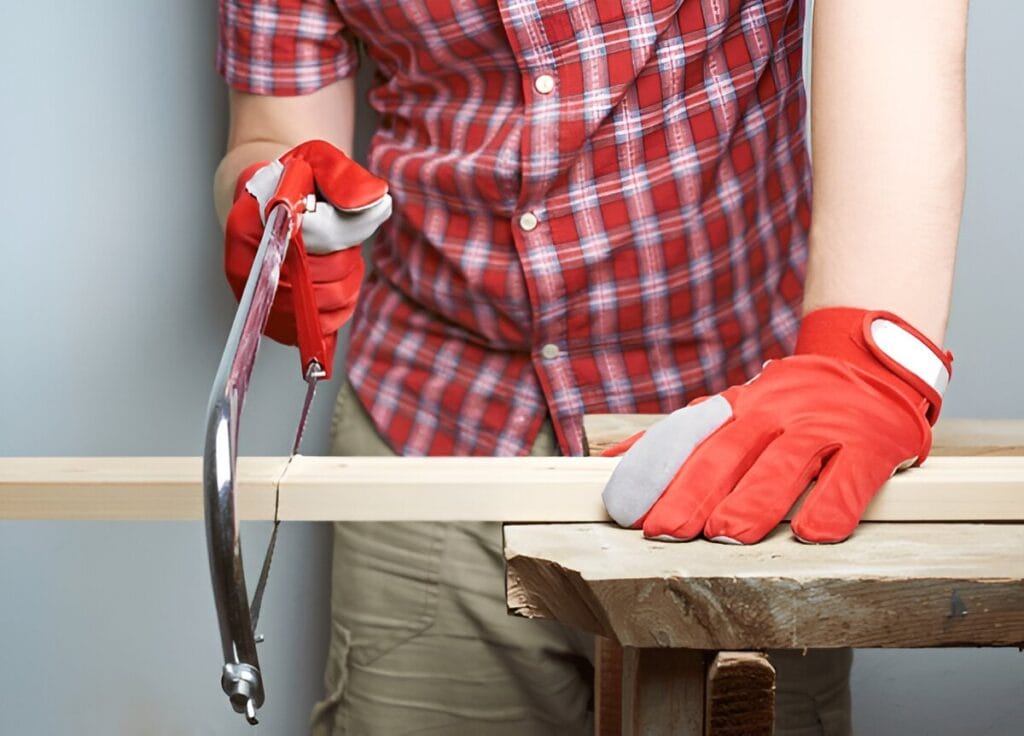
Advanced Woodworking Challenge: Ideas to Master
In this blog post, we will explore advanced woodworking challenges and provide ideas to help you master them. Whether you’re a seasoned woodworking veteran looking to take your skills to the next level or a newcomer eager to expand your knowledge, these tips and techniques will push your woodworking abilities to new heights.
Understanding Complex Joinery Techniques
In the intricate world of woodworking, precision and accuracy are paramount in achieving flawless joinery work. Mastering advanced joinery techniques not only enhances the structural integrity of your projects but also adds a touch of craftsmanship that sets your work apart from the rest. Let’s delve into the realm of complex joinery techniques that will elevate your woodworking skills to new heights.
Importance of Precision and Accuracy
Before embarking on advanced joinery techniques, it’s crucial to understand the significance of precision and accuracy in your work. Every cut, measurement, and angle plays a crucial role in the final outcome of your joinery project. This meticulous attention to detail ensures seamless joints that stand the test of time.
Advanced Joinery Techniques
Dovetail Joints
Dovetail joints are renowned for their strength and aesthetic appeal. These interlocking joints, resembling the shape of a dove’s tail, require precision cutting and careful assembly. Mastering the art of dovetail joints can elevate your woodworking projects to a professional level.
Mortise and Tenon Joints
Mortise and tenon joints are a staple in woodworking due to their strength and versatility. The mortise, a hole or slot, is paired with the tenon, a protruding piece, creating a secure joint that can withstand heavy loads. Understanding the intricacies of mortise and tenon joints is essential for tackling complex woodworking projects.
Half-Blind Dovetail Joints
Half-blind dovetail joints combine the elegance of dovetail joints with a concealed finish. These joints are commonly used in furniture making to create seamless connections between drawer fronts and sides. Mastering the art of half-blind dovetail joints requires precision cutting and meticulous attention to detail.
Step-by-Step Instructions and Tips
- Begin by selecting high-quality wood that complements the intricacy of the joint you are creating.
- Measure and mark the areas for cutting, ensuring precision in every step of the process.
- Use sharp, high-quality tools to make clean and accurate cuts, enhancing the overall finish of the joint.
- Practice assembling the joint multiple times before finalizing, ensuring a perfect fit.
- Sand and finish the joint to perfection, creating a seamless connection that showcases your craftsmanship.
By honing your skills in advanced joinery techniques such as dovetail, mortise and tenon, and half-blind dovetail joints, you can elevate your woodworking projects to new heights of sophistication. Embrace the precision and accuracy that define these techniques, and watch as your creations stand out in the world of woodworking.
Mastering the Art of Wood Carving
Wood carving is a timeless craft that holds a special place in the world of woodworking. Not only does it add intricate details and a touch of elegance to projects, but it also provides a sense of satisfaction and accomplishment for the creator. In this section, we will explore the benefits of wood carving, showcase different types of carving tools and their uses, and offer guidance on how to improve your carving skills through practice and patience.
Benefits of Wood Carving in Woodworking Projects
Wood carving offers a myriad of benefits that enhance woodworking projects in various ways, including:
- Enhanced Aesthetics: Wood carving adds unique and intricate details to projects, elevating their overall appearance and appeal.
- Personalized Touch: Carving allows woodworkers to express their creativity and individuality, making each project truly one-of-a-kind.
- Skill Development: Mastering the art of wood carving hones woodworking skills, improving precision and attention to detail.
Different Types of Carving Tools and Their Uses
Carving tools come in a wide range of shapes and sizes, each serving a specific purpose in the carving process. Some common types of carving tools include:
- Chisels: Used for cutting and shaping wood, chisels come in various sizes and shapes to accommodate different carving techniques.
- Gouges: Ideal for creating rounded or curved surfaces, gouges vary in curvature and width to achieve desired effects.
- Knives: Sharp and versatile, knives are essential for fine detailing and intricate carving work.
Improving Your Carving Skills Through Practice and Patience
Like any craft, mastering wood carving requires dedication, practice, and patience. Here are some tips to help you improve your carving skills:
- Start with Simple Projects: Begin with small and simple projects to build your confidence and refine your carving techniques.
- Study Different Techniques: Explore various carving techniques through books, videos, and workshops to expand your skill set.
- Practice Regularly: Carving is a skill that improves with practice, so dedicate time each day to hone your carving abilities
Incorporating Advanced Finishing Methods
Woodworking projects can truly come to life with the right finish. Choosing the appropriate finish not only enhances the aesthetic appeal of your work but also protects the wood from wear and tear over time. Here, we delve into the importance of selecting the right finish for your woodworking projects, explore advanced finishing techniques such as staining, dyeing, and French polishing, and provide expert recommendations on achieving a flawless finish.
Choosing the Right Finish
Selecting the right finish is crucial as it not only affects the appearance of your woodwork but also determines its durability. Different finishes offer varying levels of protection, shine, and color, so it’s essential to consider the following factors when making your choice:
- The type of wood being used
- The desired look and feel of the finished piece
- The intended use of the item (indoor vs. outdoor, high traffic vs. decorative)
Advanced Finishing Techniques
Staining
Staining is a popular technique that adds color to the wood while still allowing the natural grain to show through. It is essential to properly prepare the wood surface by sanding and sealing before applying the stain to achieve a uniform finish.
Dyeing
Dyeing is a more intricate technique that involves penetrating the wood fibers with color. It results in a vibrant and long-lasting finish but requires careful application for an even coat.
French Polishing
French polishing is a traditional method of applying shellac to the wood surface using a rubber pad. This technique requires patience and skill but produces a stunning, high-gloss finish that enhances the natural beauty of the wood.
Achieving a Flawless Finish
To ensure a flawless finish on your woodwork, follow these expert recommendations:
- Properly prepare the wood surface by sanding, filling any imperfections, and sealing the wood.
- Apply the finish in thin, even coats, allowing each layer to dry completely before adding the next.
- Use high-quality brushes, pads, or applicators to achieve a smooth and uniform finish.
- Sand between coats with fine-grit sandpaper to remove any imperfections and ensure a silky-smooth surface.
- Finish with a protective topcoat to add durability and longevity to your woodwork.
Building Intricate Furniture Designs
Designing and building complex furniture pieces requires a unique blend of skill, creativity, and precision. For seasoned woodworking experts and newcomers alike, this process can be both challenging and rewarding. In this section, we will explore the intricate world of furniture design and construction, highlighting the use of advanced tools and equipment, and providing inspiration for creating truly unique pieces that are sure to make a statement in any space.
The Process of Designing and Building Complex Furniture Pieces
- Conceptualization: Before diving into the actual construction process, it is crucial to fully conceptualize your design idea. Consider factors such as functionality, aesthetics, and overall style to ensure a cohesive end result.
- Detailed Planning: Create detailed plans and sketches that outline the dimensions, materials, and construction techniques required for your furniture piece. This will serve as a roadmap throughout the building process.
- Material Selection: Choosing the right materials is key to achieving the desired look and feel of your furniture design. Explore different wood species, finishes, and hardware options to bring your vision to life.
- Precision Construction: Utilize advanced tools such as CNC machines, laser cutters, and 3D printers to execute precise cuts, joinery, and detailing. This level of precision is essential for creating intricate and visually striking furniture designs.
Using Advanced Tools and Equipment in Furniture Making
- CNC Machines: These computer-controlled cutting machines allow for intricate and complex designs to be executed with precision. From intricate carvings to custom joinery, CNC machines open up a world of possibilities for furniture makers.
- Laser Cutters: Laser cutting technology enables precise cuts and engraving on a variety of materials, providing a unique way to add intricate detailing to furniture pieces.
- 3D Printers: Experiment with innovative design concepts by utilizing 3D printing technology to create custom hardware, decorative elements, or even entire furniture components.
Inspiration for Unique and Eye-Catching Furniture Designs
- Nature-Inspired: Draw inspiration from the beauty of nature by incorporating organic shapes, textures, and colors into your furniture designs. Think outside the box to create pieces that evoke the tranquility and harmony of the natural world.
- Mixed Materials: Experiment with combining different materials such as wood, metal, glass, or fabric to create visually dynamic furniture pieces that showcase a mix of textures and finishes.
- Statement Pieces: Dare to be bold and create furniture designs that serve as conversation starters or focal points in a room. Consider unique shapes, unconventional materials, or unexpected color combinations to make a lasting impression
Working with Exotic Woods: Tips and Tricks
Exotic woods are prized for their unique characteristics and stunning appearance, making them a popular choice among seasoned woodworkers and newcomers alike. In this section, we will delve into the world of exotic woods, exploring their different types, challenges, benefits, and providing valuable tips and tricks for handling, cutting, and finishing them to create exceptional woodworking projects.
Types of Exotic Woods and Their Characteristics
- Teak: Known for its durability and resistance to moisture, teak is a popular choice for outdoor furniture and boat building.
- Mahogany: prized for its rich color and fine grain, mahogany is commonly used in furniture making.
- Zebrawood: characterized by its distinctive striped appearance, zebrawood adds a touch of exotic flair to woodworking projects.
- Purpleheart: prized for its vibrant purple color that deepens with age, purpleheart is a visually striking choice for decorative accents.
Challenges and Benefits of Working with Exotic Woods
- Challenges:
- Exotic woods can be more expensive than traditional woods.
- Some species are harder and more difficult to work with, requiring sharp tools and careful attention.
- Benefits:
- Exotic woods offer unique colors, textures, and grain patterns that can elevate the aesthetics of your projects.
- They often have natural resistance to decay and pests, making them ideal for outdoor applications.
Tips and Tricks for Handling, Cutting, and Finishing Exotic Wood
- Acclimatize the Wood: Allow the exotic wood to acclimate to your workshop environment to prevent warping or splitting.
- Use Sharp Tools: Sharp tools are essential for clean cuts and smooth finishes when working with dense exotic woods.
- Consider Grain Orientation: Pay attention to the grain direction to avoid tear-out and achieve the best results.
- Finishing Techniques:
- Sand the wood thoroughly to achieve a smooth surface.
- Apply a clear finish to enhance the natural beauty of the wood.
- Consider using oils or waxes to protect and nourish the wood.



